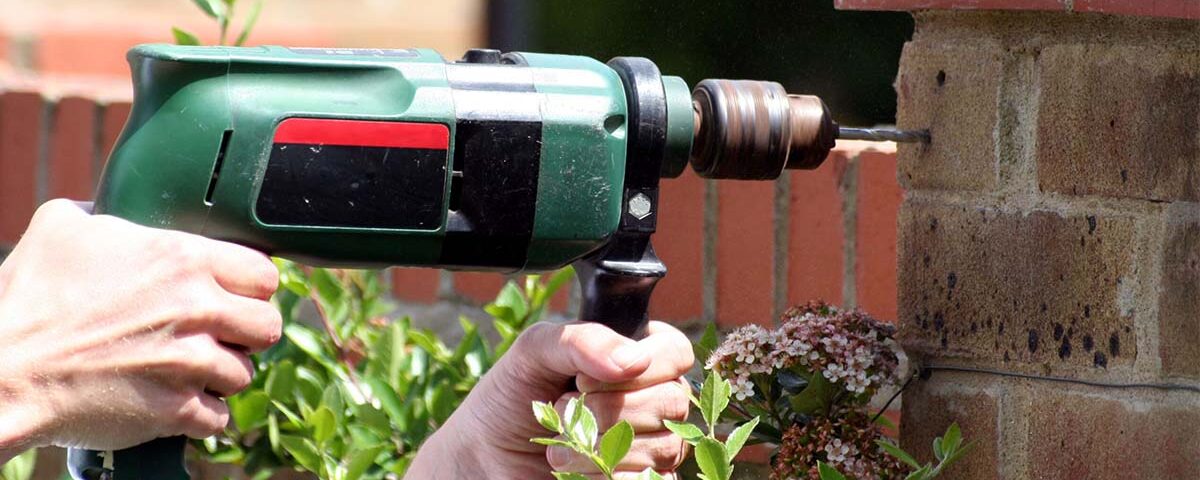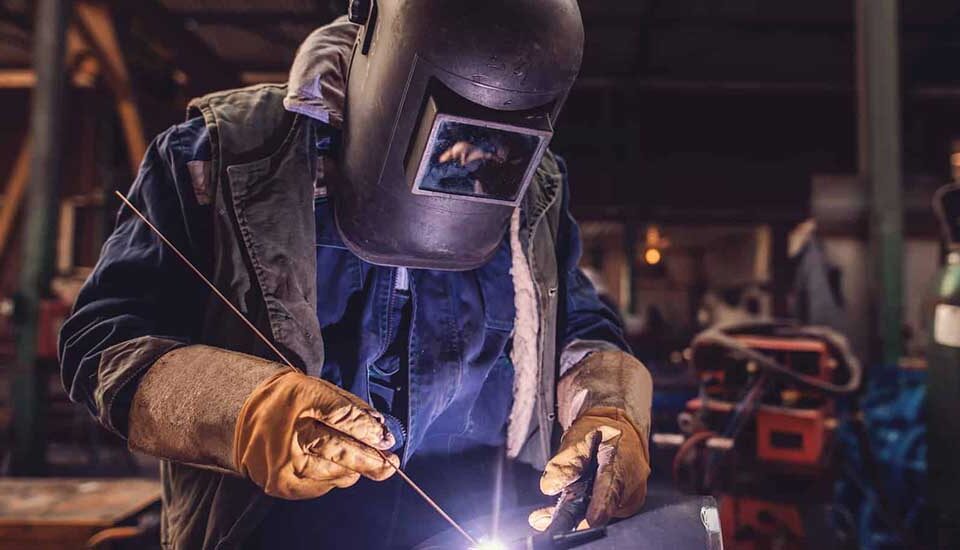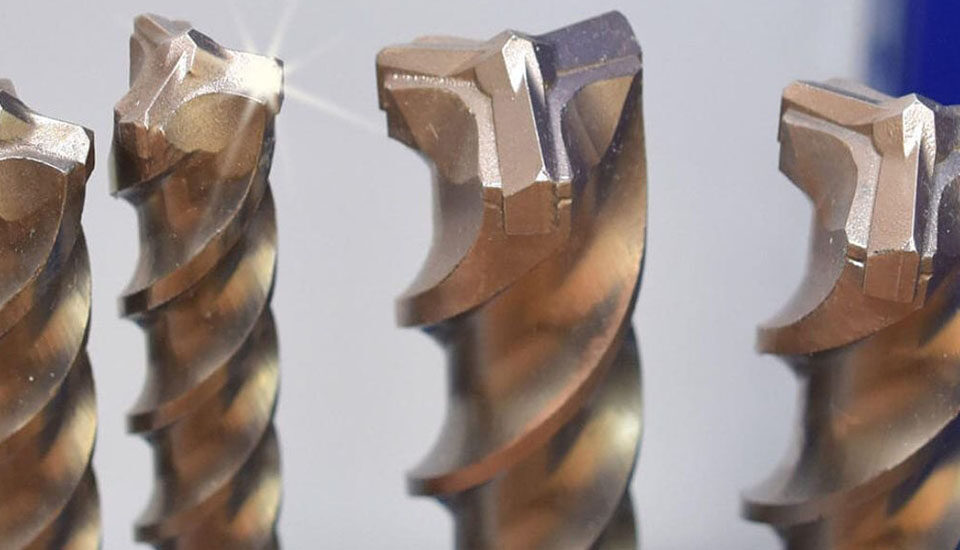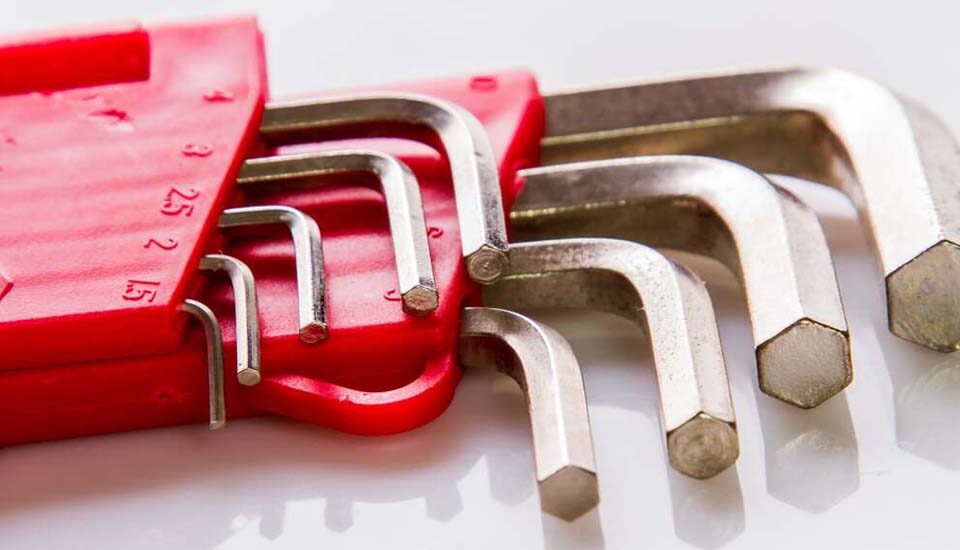Tricks to drill a brick wall + 9 important points of brick drilling

Drilling into brick wall
You may need to drill a hole in the wall to attach something to it, so you may encounter challenges that make it difficult for you. Here we have given you some tips to do this easily. Below are some tips for working with a drill on a brick wall, each of which is explained in detail below.
- Using the right drill
Choosing the right place for the hole:
- Using a special mandrel for bricks
- Using the right type of drilling
- Watering
- And other things that are mentioned below.
Tips And Tricks For Drilling Into Brick
-
Using the right drill
For better performance, use a drill with sufficient power and suitable for drilling hard materials such as brick. This drill must have enough power and speed to drill the bricks.
- Using the right drill is very important. It is better to use drills with a diamond tip so that it can easily pierce the brick.
- When you start drilling, first put a little pressure on the drill to make a small hole. Then gradually increase the pressure.
- Be sure to use a mask and safety glasses when working with the drill to protect your eyes and face.
- After finishing the work, make sure that the hole created is completely clean and there are no bricks or dust in it.
-
Choosing the right place for the hole:
If possible, use places between brick columns or where the surface of the brick is relatively smooth to drill holes. Also, use a tool or marker to mark the exact locations for the holes.
To choose the right place to drill a brick wall, consider the following points:
- Try to choose the location of the hole at a sufficient distance from the edges of the wall so that the strength of the wall is not weakened. At least 30 cm distance is recommended.
- Avoid drilling near the joints of the bricks. It is better to place the hole in the middle of the brick.
- Make sure there are no electrical or water pipes behind the point you want to drill. If necessary, use a metal detector.
- Before drilling, check the sound of the bricks with a special hammer to make sure they are healthy and free of cracks and breaks.
- Try to make the hole area completely smooth and free of appendages so that the drill can easily enter the surface.
In general, choosing a solid location, away from edges and joints, is the best option for drilling.
-
Using a special brick mandrel
Before starting work, if possible, make a small line on the surface of the brick using a punch or an iron tip. This will help the drill to penetrate the brick wall easily. To drill a brick wall, using brick lead is very useful. There are several points in using brick lead:
A punch or mandrel is a metal and conical tool that can be used to create a desired shape on the surface of a brick by hitting it with a hammer.
The steps to use the punch are as follows:
- Select the desired point for drilling
- Place the punch at that point
- Using a hammer, gently push the punch into the surface of the brick
- Move the punch in different directions and make the necessary hole
- When finished, remove the punch
-
Using the right type of drilling
To drill a brick wall, use a drilling system suitable for hard materials such as the SDS system. These bits perform better in hard materials like brick.
Different types of tools can be used to drill holes in bricks.
But SDS or Slot Drill System is a type of drilling system for precise drilling of hard surfaces such as brick, stone and concrete.
Advantages of using SDS for brick drilling:
- High accuracy in drilling and creating holes with the same diameter
- High drilling speed
- Reducing vibration and vibration of the device during operation
- Ability to adjust the drilling angle
- Softening of the top of the drill tip to prevent breakage
However, SDS tools are relatively expensive.
So if you plan to do a lot of drilling on hard surfaces, the SDS system can be a good choice.
-
Water sprinkling
When working with a drill on a brick wall, the drill gets hot over time, which slows it down. It is better to use water while working to make the work easier.
Wetting the brick while drilling has several benefits:
- Dust reduction: the wetness of the brick surface causes less dust to be produced when drilling.
- Ease of Drilling: Wet brick is softer and the drill penetrates it more easily, making it easier to drill.
- Avoiding overheating of the drill: the wetness of the surface cools and reduces the friction of the drill and prevents it from overheating.
- Longer life of the drill: reducing the temperature of the drill will increase its useful life.
- Preventing the spreading of brick particles: Being wet makes the particles stick together and spread less.
Therefore, it is very useful to wet the brick before and during drilling.
-
Appropriate speed in rotation mode:
When drilling, the correct speed in the rotation of the drill is very important. The appropriate speed of the drill depends on the type of brick, tool and drill. High speed may damage the drill, while low speed may prolong the drilling time.
For drilling a brick wall, the appropriate speed of rotation of the drill depends on the type of drill and the hardness of the brick, but in general there are a few points:
- Low speed (about 300-500 rpm): When first penetrating and starting drilling, it is better to use low speed so that the drill enters the brick slowly.
- Medium speed (about 700-900 rpm): Once the drill is in the brick, you can increase the speed to medium for faster drilling.
- High speed (more than 1000 rpm) is recommended only when the drill is completely embedded in the brick. High speed may cause the drill bit to break or become wavy.
- Also, after working for a while, it is better to reduce the speed so that the drill cools down and prevents it from overheating.
-
Using the hammer or hilt mode:
For hard bricks, it may be necessary to use the hammer mode on the drill. This mode helps the drill to enter the brick easily.
Hammer drill can be used to drill holes in brick walls. The advantages of using this mode are as follows:
- The hammer blows of the drill make it penetrate better and faster in the hard surface of the brick.
- Vibrations caused by hammer blows cause the brick to crumble and break around the tip of the drill and make it easier to advance.
- It creates less temperature and friction than the normal mode of the drill, which will also increase the life of the drill.
- It is less noisy.
Of course, the operator must have sufficient skill in controlling the drill in the hammer mode to prevent it from breaking or suddenly undulating. Also, at the end of the work, the created dust must be cleaned.
-
Using different drills:
Smaller drill bits penetrate harder materials better. Because the lower the cross section, the higher the applied pressure. Therefore, pay attention to the following:
- First, determine the size of the hole you want to drill to get the right drill bit for that size
- Get some drill bits with smaller numbers
- Start with the smallest drill bit and then change drill bits from small to large
- With this work, the hard surface is pierced more easily and reaches the desired size
-
Use of safety equipment:
When working, use safety equipment to avoid injury. For this, you can use the following items:
- It is necessary to use protective glasses to prevent particles from entering, and also to prevent foreign objects from being thrown into the eyes by using glasses.
- Using a mask can prevent the created dust from entering your respiratory tract
- Using proper gloves prevents injury and blistering of hands.
- Before starting work, see the necessary training or ask for help from experienced people.
By applying these tricks and taking the necessary precautions, you can easily drill a hole in a brick wall using a drill. Also, use the necessary safety measures such as wearing goggles and a protective mask when doing this.



